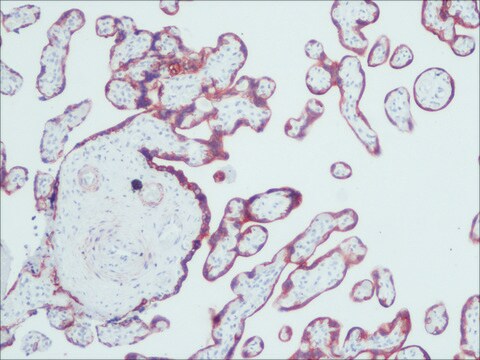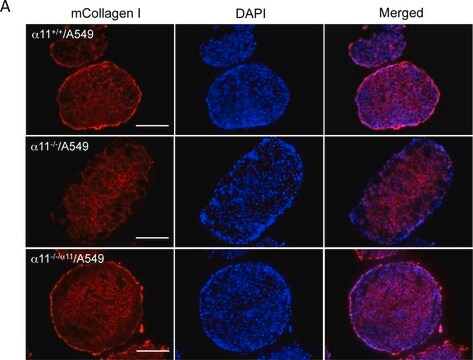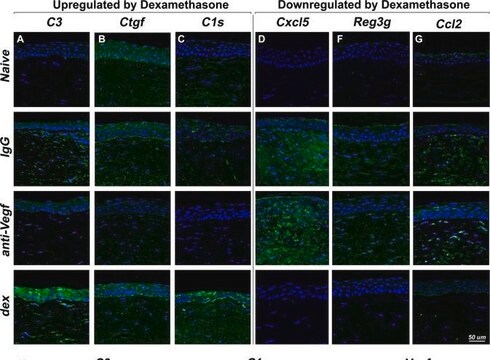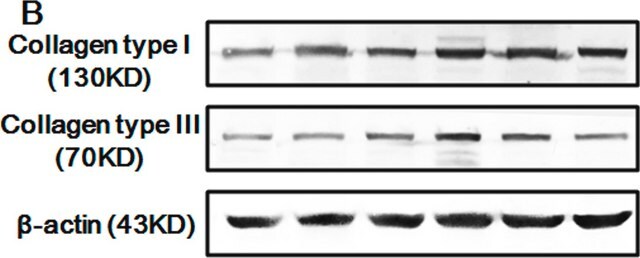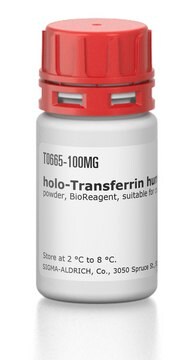M7898
Monoclonal Anti-Thy 1.1 antibody produced in mouse
clone TN-26, purified immunoglobulin, buffered aqueous solution
Sinonimo/i:
Anti-CD90, Anti-CDw90
Autenticatiper visualizzare i prezzi riservati alla tua organizzazione & contrattuali
About This Item
Prodotti consigliati
Origine biologica
mouse
Coniugato
unconjugated
Forma dell’anticorpo
purified immunoglobulin
Tipo di anticorpo
primary antibodies
Clone
TN-26, monoclonal
Stato
buffered aqueous solution
Reattività contro le specie
mouse
tecniche
complement-mediated cytotoxicity assay: suitable
indirect immunofluorescence: suitable
Isotipo
IgM
N° accesso UniProt
Condizioni di spedizione
dry ice
Temperatura di conservazione
−20°C
modifica post-traduzionali bersaglio
unmodified
Informazioni sul gene
mouse ... Thy1(21838)
Categorie correlate
Descrizione generale
Monoclonal Anti-Thy 1.1 (mouse IgM isotype) is derived from the hybridoma produced by the fusion of mouse myeloma cells and splenocytes from an immunized mouse.
Thymus cell antigen 1 (Thy 1.1) is a glycosylphosphatidyl-anchored protein. It belongs to the of the immunoglobulin superfamily. Thy 1.1 is expressed in stem cells, T-cells and neurons.
Specificità
Recognizes Thy 1.1 bearing cells and is less than 5% cross-reactive with Thy 1.2 bearing cells. Titer is 1:20,000 as determined by in vitro cytotoxicity against AKR/J thymocytes.
Immunogeno
thymocytes from AKR/J (Thy 1.1) mice.
Applicazioni
Monoclonal Anti-Thy 1.1 antibody produced in mouse has been used in immunopanning and immunofluorescence.
Azioni biochim/fisiol
Studies have shown that mice lacking the protein thymus cell antigen 1 (Thy 1.1) have an increased number of fibroblasts. It suppresses proliferation and enhances apoptosis in dermal fibroblasts, thereby modulating cell growth. This is carried out by regulating the action of β3 integrin.
Stato fisico
Solution in 0.1 M phosphate buffered saline, pH 7.4, containing 15 mM sodium azide.
Esclusione di responsabilità
Unless otherwise stated in our catalog or other company documentation accompanying the product(s), our products are intended for research use only and are not to be used for any other purpose, which includes but is not limited to, unauthorized commercial uses, in vitro diagnostic uses, ex vivo or in vivo therapeutic uses or any type of consumption or application to humans or animals.
Non trovi il prodotto giusto?
Prova il nostro Motore di ricerca dei prodotti.
Codice della classe di stoccaggio
10 - Combustible liquids
Classe di pericolosità dell'acqua (WGK)
nwg
Punto d’infiammabilità (°F)
Not applicable
Punto d’infiammabilità (°C)
Not applicable
Scegli una delle versioni più recenti:
Possiedi già questo prodotto?
I documenti relativi ai prodotti acquistati recentemente sono disponibili nell’Archivio dei documenti.
Zhenghui Cheng et al.
BMC molecular and cell biology, 22(1), 21-21 (2021-04-09)
Schwann cells (SCs) play a crucial role in the repair of peripheral nerves. This is due to their ability to proliferate, migrate, and provide trophic support to axon regrowth. During peripheral nerve injury, SCs de-differentiate and reprogram to gain the
J A Cohen et al.
Journal of neuroscience research, 31(4), 622-634 (1992-04-01)
The neu gene, which encodes a putative tyrosine kinase growth factor receptor termed p185neu, was originally identified as a dominant transforming gene in neurogliomas and schwannomas induced by transplacental treatment of rat embryos with ethylnitrosourea. The present studies were undertaken
Wendy A Neveu et al.
American journal of physiology. Cell physiology, 309(9), C616-C626 (2015-09-04)
Idiopathic pulmonary fibrosis is a progressive lung disease that increases in incidence with age. We identified a profibrotic lung phenotype in aging mice characterized by an increase in the number of fibroblasts lacking the expression of thymocyte differentiation antigen 1
Yuqing Feng et al.
Molecular medicine (Cambridge, Mass.), 29(1), 9-9 (2023-01-19)
Retinal ganglion cells (RGCs) apoptosis is a vital manifestation of retinal ischemia/reperfusion (I/R) injury, yet the underlying mechanisms are not well understood. The contribution of long noncoding RNAs (lncRNAs) to this cellular process is currently being explored. Based on a
Glial-mediated neuroprotection: Evidence for the protective role of the NO-cGMP pathway via neuron-glial communication in the peripheral nervous system.
Thippeswamy T, et al.
Glia, 49(2), 197-210 (2005)
Il team dei nostri ricercatori vanta grande esperienza in tutte le aree della ricerca quali Life Science, scienza dei materiali, sintesi chimica, cromatografia, discipline analitiche, ecc..
Contatta l'Assistenza Tecnica.